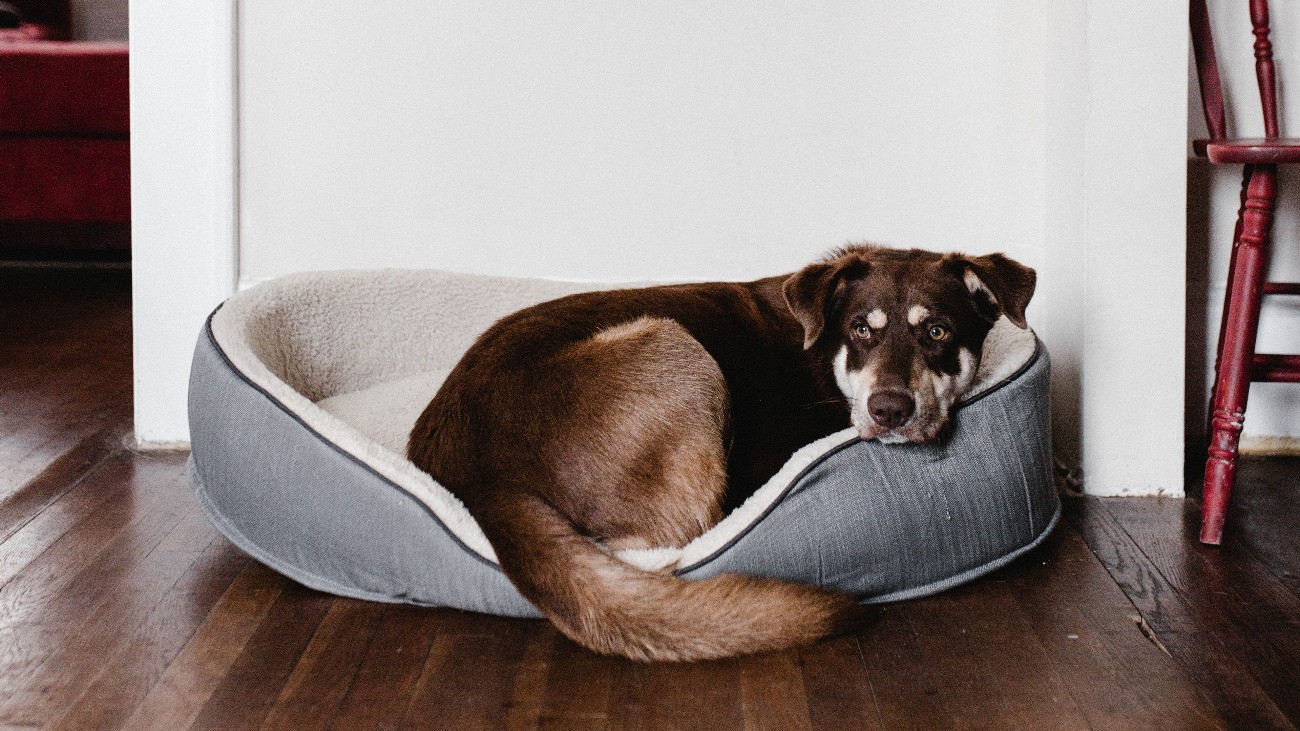Just like us, our dogs can get stiff joints and sore backs, many of which may be helped by a change in their sleeping arrangements. Take a look at your dog’s bed. Is it cushioned enough that it’s likely to conform to their shape? Is it firm enough to still be supportive?
If the answer is to either of these questions is no, it might be time to pick out a new dog bed. But before you do, it’s worth considering whether your dog needs a specialized orthopedic bed.
What is an orthopedic dog bed?

An orthopedic dog bed is one that is specifically designed to support your dog’s body in such a way as to reduce discomfort when lying down. They usually consist of high-quality memory foam, which conforms to your dog’s shape but still provides excellent support.
These beds should be large.
Dogs that have stiff or sore joints may not want to curl up like they did when they were young, so the bed should ideally be big enough that your dog can stretch out on his side. They need to be thick, too, and in general the thicker the better – but only in so far as it’s not a great height for your dog to climb into. Dogs with smaller legs need thinner beds!
Many orthopedic beds have a raised side for resting a doleful chin- this is a useful feature, but not essential as long as you can provide your dog with cushions to support their head and neck.
High sides can in fact make it harder for your dog to get into the bed, so the design is important.
The fabric is also important – a waterproof layer is a good idea especially if you intend to use it as an outdoor dog bed, but to make it comfortable a fabric layer may also be necessary. Whatever it should be made of should be non-slip so that your dog can feel comfortable and confident using the bed.
Which dogs might need an orthopedic bed?

So, does your dog need an orthopedic bed? Well, that really depends on their size, age, and medical history. Large breed dogs are particularly prone to joint issues and I would advocate that they need an orthopedic bed from early adulthood.
They’re often very heavy dogs, and their weight would quickly compress many lower-quality dog beds leaving them lying on the floor and putting pressure through uncomfortable places.
Small and medium-sized dogs will get away with normal dog beds until they reach ‘senior’ age (about 8 years for medium breeds and 10 for smaller breeds) although there’s no harm done in getting them one sooner if you want to.
Dogs with arthritis very commonly benefit from having an orthopedic bed. It takes pressure off their joints whilst they’re sleeping and therefore relieves joint pain.
Whilst most dogs with arthritis are elderly, it does get diagnosed in dogs as young as 1 year old, particularly if they have other joint problems (such as hip or elbow dysplasia) or have suffered joint injury (such as a fracture).
Any sign of joint stiffness (such as a limp soon after rising from bed) should prompt the question whether an orthopedic bed would provide better support.
Dogs may also benefit from having an orthopedic bed whilst in surgical recovery. This is especially true of orthopedic surgery (joint or bone surgery) but is also true of any surgery that means your dog is going to spend a lot of time lying down.
Examples might be major abdominal surgery or surgery with complications that mean your pet will have a longer recovery time than normal.
Spinal disease patients often need extended periods of rest in order for the spine to heal and stabilize. Whilst some patients will have surgery on their spine necessitating a shorter rest period, more minor spinal conditions may be managed by prescribing six or even eight weeks of cage rest.
Orthopedic beds are essential for these patients, who will not only be lying down for long periods of time but who have a limited ability to move themselves around to get more comfortable.
Don’t forget that just because your dog doesn’t need an orthopedic bed doesn’t mean they wouldn’t like to have one. It’s absolutely ok to get your dog a huge, comfy bed for the simple reason that you love them and want to spoil them!
Other Ways to Help Dogs with Joint Pain
If your dog does have joint pain, don’t just leave it at getting an orthopedic dog bed- there are lots of other things you can do to help them out.
Putting the bed on a non-slip mat so that it doesn’t move around and making sure there’s plenty of room around the bed for your dog to maneuver themselves into it are both important.
You should also consider where the dog bed is placed – if it’s upstairs then the benefits of the foam are likely to be undone by the difficulty of using the stairs.
You can read more about the symptoms and treatment of canine arthritis in this article or read this article for other top tips to help your dog manage with join paint in old age. You can also check out Canine Arthritis Management for more tips on setting up your home to be easier on your dog’s joints.
Did you find this article helpful?
